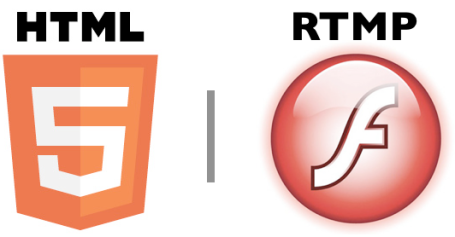
The announcement by Adobe last week of the death of Flash on mobile devices will have a significant impact on software development platforms battle for mobiles, but it’s not the end of this war. The way you develop your mobile applications is important but it’s not the only key element to consider for online multimedia services. Our question is now: Is HTML5 able to replace Flash technology for video calling? Obviously, experts working on life video communications over the web, HTML5 is not yet ready but why?
HTML5
There’s two tags to consider for video services <video> and <device> to send and receive a video stream. Unfortunately, these tags are both unable to control in real time a life video/audio streaming. Video calling requires an application to control the bandwidth, decoding/encoding and manage a channels’ real time synchronization. Currently, most web browsers are not supporting all <video> formats allowed. By the way, <device> API is not yet implemented, so it’s not possible to use your webcam and microphone with HTML5. This complicated mess in web standards means that you will need to embed separate versions of your video streaming channel to appease the requirements of each browser. This makes impossible to create and deploy any universal video call service thru HTML5 today.
Flash/RTMP
RTMP is available as an open specification to create products and technology. This public protocol is designed for web browsing to be controlled by an cross-platform application: Flash Player or any other application able to manage the public Real Time Messaging Protocol (RTMP). Flash has provided rich camera and microphone universal access for several years now and supports most of multimedia devices. RTMP is omnipresent in the world wide web experience, inside banners, diagrams, infographics, videos, youtube and that’s a great advance because this means almost all web surfers will be able to run your service without any other plugin installation in their computer.
Conclusions:
HTML5 can’t manage a web video call for now. Google, Skype and many others big internet players had tried to define an HTML5 framework to build a web soft phone but they lack of a global solution. Today, Flash players still present in 99% web browsers of the world’s computers while current HTML5 tags are not yet ready for video calling and still not well supported by common web browsers. For mobile devices like iOS or Android, you can build your own native mobile application using RTMP but without Flash Player. So, the winner for web video communications is Flash and its public RTMP protocol for now.
Recommendations:
Our recommendations for video call services is to use the Flash Player for web browsers and create a native application over RTMP for mobiles devices. That’s the best solution in the current situation, and probably for the near future. Otherwise, we will have to reinvent and impose a new standard for multimedia communications, do you like this plan?
“Flash ain’t dead yet” for life video streaming over the Internet and probably for long time.
Sources: